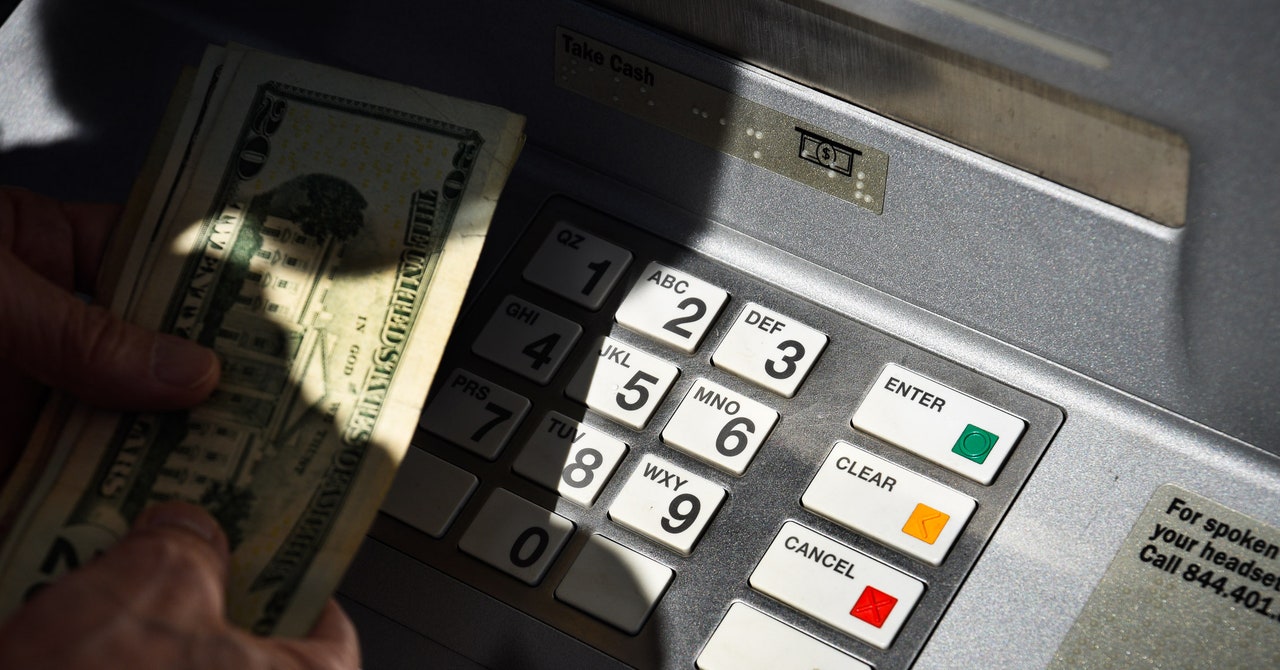There is a grand tradition at the annual Defcon security conference in Las Vegas of hacking ATMs. Unlocking them with safecracking techniques, rigging them to steal users’ personal data and PINs, crafting and refining ATM malware and, of course, hacking them to spit out all their cash. Many of these projects targeted what are known as retail ATMs, freestanding devices like those you’d find at a gas station or a bar. But on Friday, independent researcher Matt Burch is presenting findings related to the “financial” or “enterprise” ATMs used in banks and other large institutions.
Burch is demonstrating six vulnerabilities in ATM-maker Diebold Nixdorf’s widely deployed security solution, known as Vynamic Security Suite (VSS). The vulnerabilities, which the company says have all been patched, could be exploited by attackers to bypass an unpatched ATM’s hard drive encryption and take full control of the machine. And while there are fixes available for the bugs, Burch warns that, in practice, the patches may not be widely deployed, potentially leaving some ATMs and cash-out systems exposed.
“Vynamic Security Suite does a number of things—it has endpoint protection, USB filtering, delegated access, and much more,” Burch tells WIRED. “But the specific attack surface that I’m taking advantage of is the hard drive encryption module. And there are six vulnerabilities, because I would identify a path and files to exploit, and then I would report it to Diebold, they would patch that issue, and then I would find another way to achieve the same outcome. They’re relatively simplistic attacks.”
The vulnerabilities Burch found are all in VSS’s functionality to turn on disk encryption for ATM hard drives. Burch says that most ATM manufacturers rely on Microsoft’s BitLlocker Windows encryption for this purpose, but Diebold Nixdorf’s VSS uses a third-party integration to run an integrity check. The system is set up in a dual-boot configuration that has both Linux and Windows partitions. Before the operating system boots, the Linux partition runs a signature integrity check to validate that the ATM hasn’t been compromised, and then boots it into Windows for normal operation.
“The problem is, in order to do all of that, they decrypt the system, which opens up the opportunity,” Burch says. “The core deficiency that I’m exploiting is that the Linux partition was not encrypted.”
Burch found that he could manipulate the location of critical system validation files to redirect code execution; in other words, grant himself control of the ATM.
Diebold Nixdorf spokesperson Michael Jacobsen tells WIRED that Burch first disclosed the findings to them in 2022 and that the company has been in touch with Burch about his Defcon talk. The company says that the vulnerabilities Burch is presenting were all addressed with patches in 2022. Burch notes, though, that as he went back to the company with new versions of the vulnerabilities over the past couple of years, his understanding is that the company continued to address some of the findings with patches in 2023. And Burch adds that he believes Diebold Nixdorf addressed the vulnerabilities on a more fundamental level in April with VSS version 4.4 that encrypts the Linux partition.

